Silver Linings Playbook

R, 2012, Drama/Romance, 2h 2m
Table of Contents
What Is Silver Linings Playbook About?
A man with bipolar disorder bonds with a widow through dance as he aims to mend his life.
Why You Should Watch Silver Linings Playbook
In the world of cinematic storytelling, few films manage to tackle the intricate dynamics of human emotion and relationships with the finesse and authenticity displayed in Silver Linings Playbook. Directed by David O. Russell and adapted from Matthew Quick’s novel of the same name, this film emerges not only as an exploration of love and mental health but also as a testament to the resilience of the human spirit.
At the heart of the narrative is Pat Solitano (played with raw intensity by Bradley Cooper), a man recently released from a mental institution after a bipolar disorder diagnosis. His return to the ‘real world’ and the quest to reconcile with his estranged wife are painted against a backdrop of personal challenges, societal expectations, and the complexities of familial bonds. Cooper’s portrayal is commendable; he presents a character that oscillates between vulnerability and determination, making Pat both relatable and deeply human.
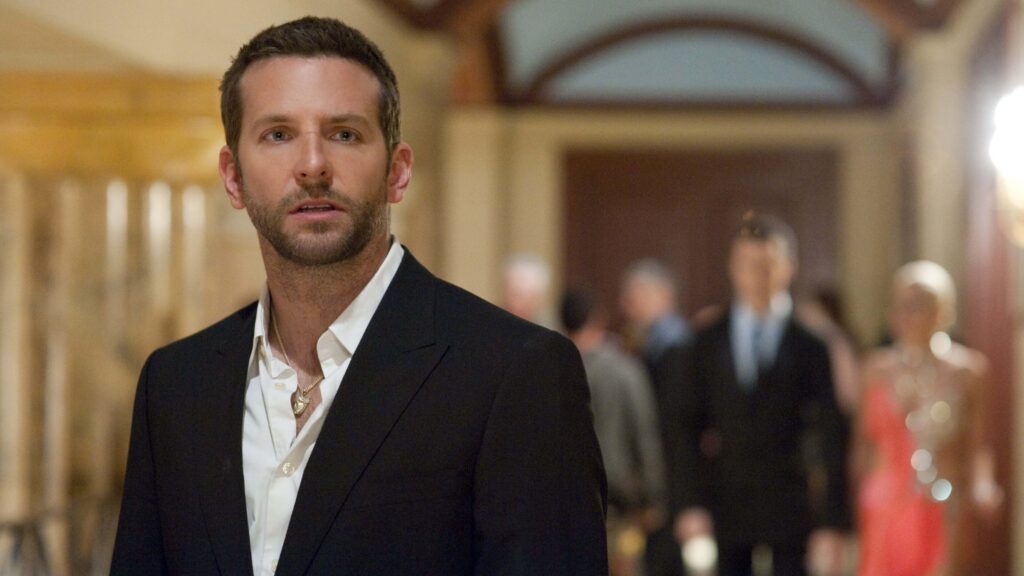
Opposite Pat is Tiffany (a riveting performance by Jennifer Lawrence), a young widow grappling with her own demons. Lawrence’s Tiffany is fiery, unpredictable, and yet profoundly grounded. The chemistry between Cooper and Lawrence is palpable. Their interactions, filled with intense dialogues, dance rehearsals, and moments of silent understanding, are the highlights of the film.
But what truly sets Silver Linings Playbook apart is its ability to balance heavy themes with moments of levity. For every intense confrontation, there’s a humorous quip or situation, ensuring the narrative doesn’t drown in its own seriousness. The subplot involving the Philadelphia Eagles and Pat Sr.’s (Robert De Niro) superstitious beliefs infuses the film with humor and heart. De Niro, in one of his more nuanced roles in recent years, presents a father torn between his own obsessions and his genuine concern for his son’s well-being.
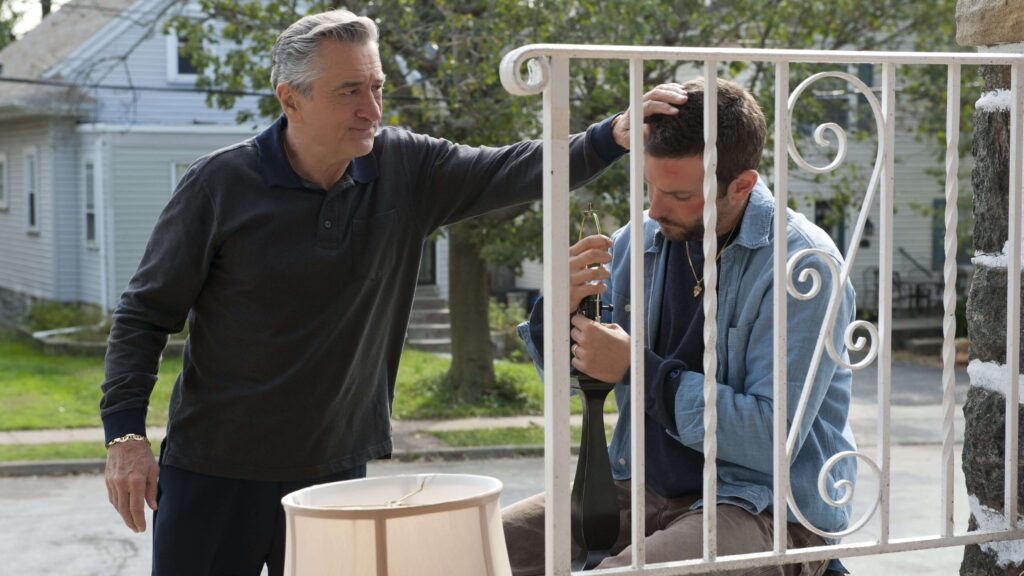
The film’s portrayal of mental health is both its strength and, to some critics, its point of contention. While it doesn’t shy away from showing the harsh realities of disorders like bipolar and depression, there are moments when the narrative seems to romanticize these conditions, especially in the context of Pat and Tiffany’s budding relationship.
Silver Linings Playbook is a cinematic gem that delves deep into the intricacies of love, family, and personal redemption. With stellar performances, a compelling storyline, and a perfect blend of drama and humor, it stands as a film that not only entertains but also sparks important conversations about mental health and societal acceptance. It’s a reminder that amidst life’s chaos and unpredictability, one can always find a ‘silver lining’ if they choose to see it.
The Theme of Silver Linings Playbook
Silver Linings Playbook, directed by David O. Russell and adapted from Matthew Quick’s novel, is a film that delves deep into the complexities of human emotion, relationships, and personal growth. Through its intricate characters and their interwoven stories, several significant themes emerge.
At the forefront of the narrative is the theme of mental health. The film provides an intimate look into the challenges faced by those struggling with disorders, as well as the stigmas that often accompany such diagnoses. Pat Solitano, after being diagnosed with bipolar disorder, is released from a mental institution and grapples with his condition in a world that often misunderstands or fears it. The film doesn’t shy away from showing the raw, unfiltered ups and downs of his journey. Yet, it also highlights that recovery, while nonlinear, is possible, especially with the right support and understanding.
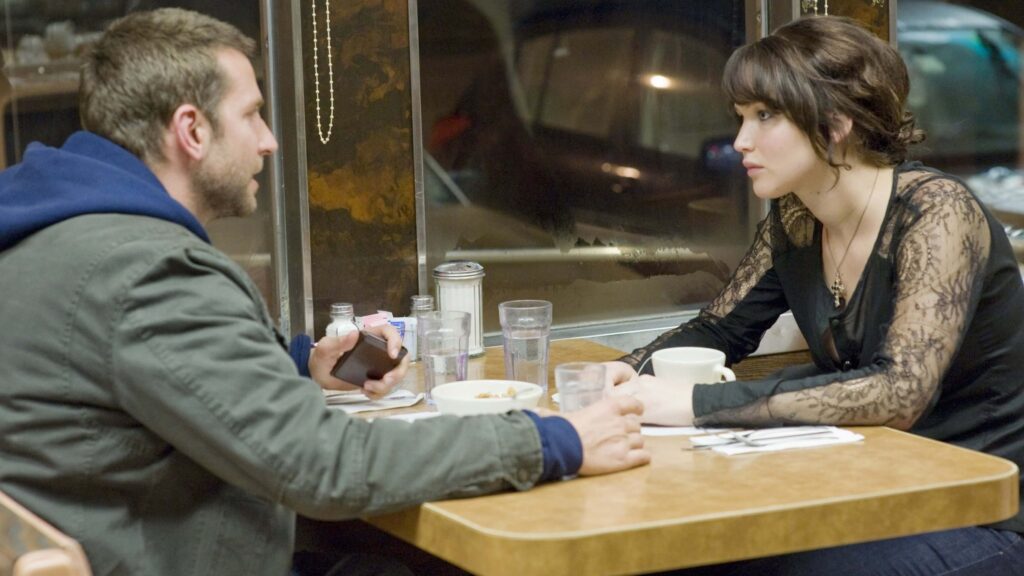
Each character in the film is on a quest for happiness, albeit with different definitions of what that entails. For Pat, happiness is initially tied to reconciling with his estranged wife. However, as the story progresses, it becomes clear that true happiness is more about self-acceptance and forging genuine connections with others. The film underscores the idea that, while life might not always go according to plan, there’s always a ‘silver lining’ if one chooses to see it.
Romantic love plays a pivotal role, especially between Pat and Tiffany. However, their relationship is unconventional and borne out of mutual understanding of each other’s flaws and vulnerabilities. It’s a love that grows from camaraderie, shared pain, and mutual healing. Beyond romance, the film also delves into familial love. Pat’s relationship with his father, Pat Sr., is a testament to the unconditional love and challenges that often exist between parents and their children. The shared moments between them, from football rituals to heartfelt conversations, paint a picture of a bond that, while strained, can’t easily be broken.
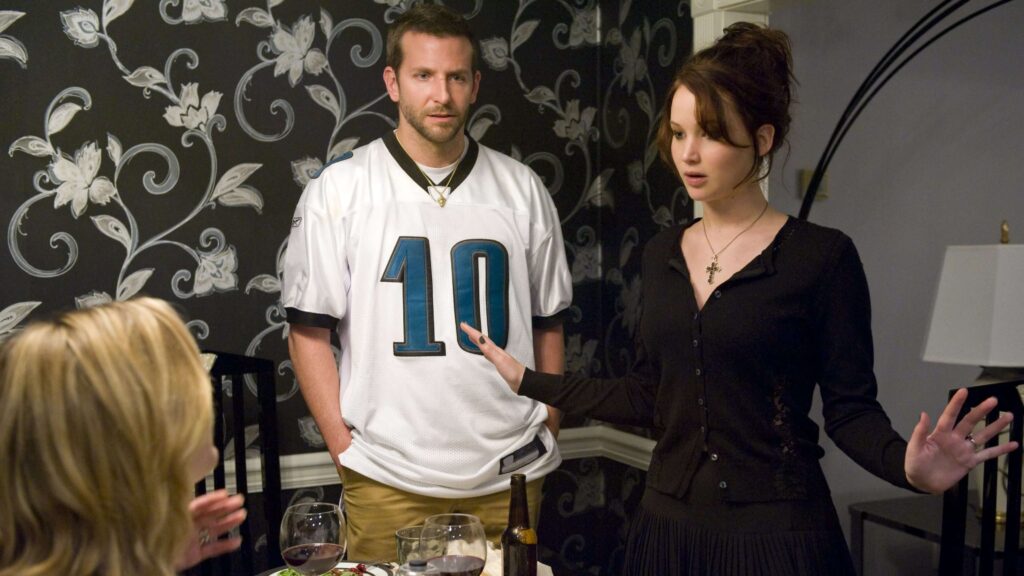
A strong undercurrent of the narrative is the belief in second chances. Every major character is, in some way, broken or has faced significant setbacks. Whether it’s Pat’s attempts to rebuild his life after his diagnosis and the end of his marriage, Tiffany’s struggles after the loss of her husband, or Pat Sr.’s efforts to reconnect with his son and find success with his “betting” endeavors, each is looking for redemption. The film promotes the idea that everyone deserves a shot at redemption, no matter their past.
The characters in the film adopt various coping mechanisms to deal with their traumas and anxieties. While Pat channels his energies into physical fitness and reading to win back his wife, Tiffany uses dance as an outlet for her grief. Pat Sr. is superstitious and believes in the luck of football games, using it as a way to connect with his son and bring fortune to his life. These obsessions, while seemingly quirks, are indicative of deeper emotional struggles, emphasizing the lengths to which people go to find stability in a chaotic world.

Silver Linings Playbook is a tapestry of human emotions and experiences. Through its deeply flawed yet relatable characters, it touches upon themes that resonate with many — the trials of mental health, the enduring quest for happiness, the transformative power of love, the belief in redemption, and the various ways individuals cope with life’s adversities. The film’s beauty lies in its portrayal of the imperfect journey towards finding one’s personal ‘silver lining.’
The Cinematography of Silver Linings Playbook
One of the standout features of the film’s cinematography is its intimate, handheld camera work. The frequent use of close-ups and tight framing, particularly during intense dialogue scenes, pulls viewers directly into the characters’ world, making their emotions palpable. This choice aids in immersing the audience in the raw, unpredictable nature of the lead characters’ mental health struggles, their budding relationship, and the chaos of their surrounding family dynamics.
The film’s color palette is rich and naturalistic. The hues are grounded in reality, reinforcing the authenticity of the story. Scenes set within homes have a warm, familiar tone, contrasting with the colder, more sterile environments of institutions and therapy sessions.
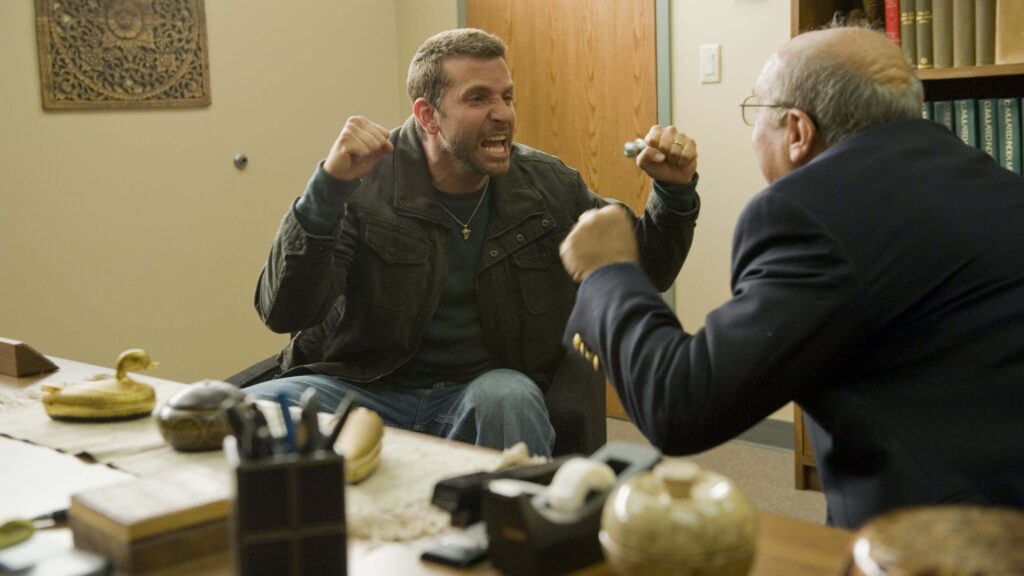
Takayanagi’s camera is also dynamic, moving fluidly within scenes — tracking characters, switching perspectives, or simply holding a shot to let emotional moments linger. This movement, particularly in sequences like the dance rehearsals, lends a kinetic energy that mirrors the unpredictability of the protagonists’ lives.
Lastly, the use of natural light in many scenes bolsters the film’s genuine, unfiltered vibe. Whether it’s the diffused daylight pouring into living rooms or streetlights illuminating nighttime conversations, the lighting choices emphasize the story’s rawness and realism.
The Soundtrack of Silver Linings Playbook
The soundtrack of Silver Linings Playbook serves as a resonant backdrop to its poignant narrative, encapsulating the film’s exploration of emotional recovery, love, and familial dynamics. Comprising an assortment of genres and eras, the music mirrors the characters’ diverse emotional states, from their turbulent struggles with mental health to their moments of joy, passion, and redemption.
A recurring soulful classic becomes a symbol of the protagonist’s traumatic past, creating an emotional anchor that frequently reminds him—and the audience—of the events that shaped his current journey. Its tender notes stand in contrast with its association with unsettling memories.
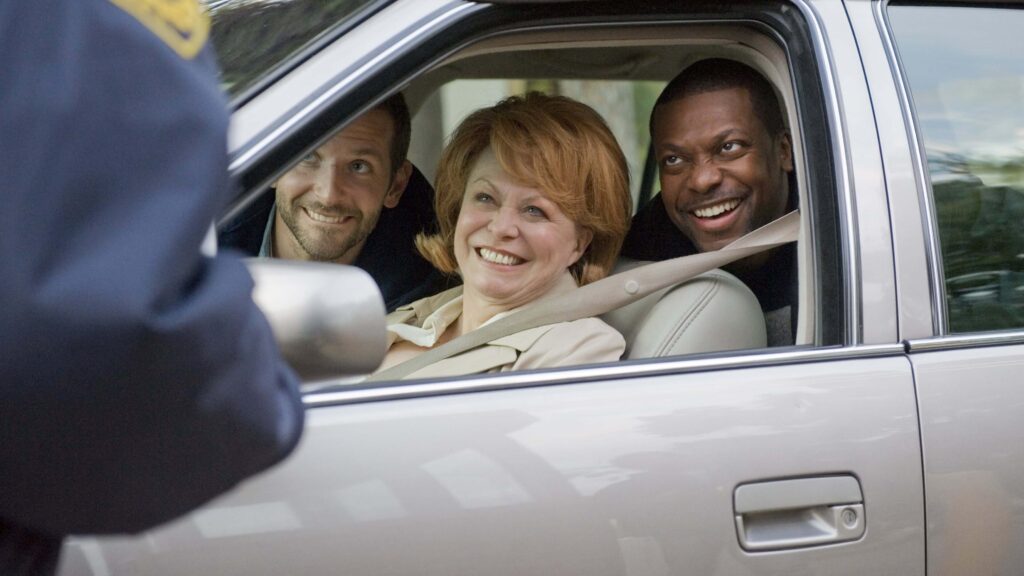
An upbeat and lively rock track becomes emblematic of the movie’s moments of hope and determination. It captures the essence of the characters’ will to overcome challenges and embrace change.
Contrastingly, a melancholic duet offers a reflective backdrop during moments of introspection, capturing the nuances of love lost and the yearning for connection.
Songs from a celebrated musical are cleverly used to tie familial ties and shared memories, anchoring the protagonist’s sense of belonging and love for family traditions.
Popular songs from the film include:
- “My Cherie Amour” by Stevie Wonder
- “Always Alright” by Alabama Shakes
- “Girl from the North Country” by Bob Dylan and Johnny Cash
- “Silver Lining (Crazy ‘Bout You)” by Jessie J
- “Maria” from “West Side Story”
Together, these tracks craft an evocative soundscape, reinforcing the film’s emotional tapestry and enhancing the viewer’s immersion into the story.
Below is a playlist inspired by the film.
The Cast of Silver Linings Playbook
- Bradley Cooper as Patrizio “Pat” Solitano Jr.: The protagonist who has bipolar disorder. After a stint in a mental health facility, he moves back with his parents and tries to reconcile with his ex-wife, all while navigating his condition and new relationships.
- Jennifer Lawrence as Tiffany Maxwell: A young widow with her own set of psychological issues. She forms a bond with Pat, and the two enter a dance competition together.
- Robert De Niro as Patrizio “Pat” Solitano Sr.: Pat’s father who is superstitious and has obsessive-compulsive tendencies, especially concerning his favorite football team, the Philadelphia Eagles.
- Jacki Weaver as Dolores Solitano: Pat’s supportive mother who tries to keep the peace between Pat and his father, and who takes care of Pat after his release from the facility.
- Chris Tucker as Danny McDaniels: Pat’s friend from the mental health facility who occasionally escapes to visit Pat, offering comic relief in the movie.
- Anupam Kher as Dr. Cliff Patel: Pat’s therapist, who tries to help him navigate his bipolar disorder and adjust to life outside the mental health facility.
- John Ortiz as Ronnie: Pat’s old friend who deals with his own marital and personal problems.
- Shea Whigham as Jake Solitano: Pat’s brother, who is more conventionally successful and often serves as a point of comparison for Pat.
- Julia Stiles as Veronica Maxwell: Tiffany’s sister and the wife of Ronnie. She often looks down on Tiffany and isn’t particularly supportive of her.
- Paul Herman as Randy: A friend of Pat Sr. who is involved in some of the betting related to the Eagles’ games.
The Filmmakers of Silver Linings Playbook
- Director: David O. Russell
- Screenwriter (Adapted): David O. Russell
- Producers: Donna Gigliotti, Bruce Cohen, Jonathan Gordon
- Director of Photography (Cinematographer): Masanobu Takayanagi
- Editors: Jay Cassidy, Crispin Struthers
- Production Designer: Judy Becker
- Composer: Danny Elfman
- Casting Directors: Mary Vernieu, Lindsay Graham

Crabby Snacks

Inspiration
Dolores Makes Crabby Snacks And Homemades

More About Silver Linings Playbook
Bipolar disorder, as portrayed in “Silver Linings Playbook” through the character Pat Solitano, involves periods of mood elevation, known as mania or hypomania, where a person may experience increased energy, euphoria, and a reduced need for sleep. These episodes are contrasted with periods of depression, where the individual may face sadness, lethargy, and a loss of interest in daily activities. The film showcases the challenges of managing bipolar disorder, including the impact on relationships, the necessity of adherence to treatment, and the stigma associated with mental health disorders. It also highlights the importance of support from family and friends in the journey toward stability and recovery.

